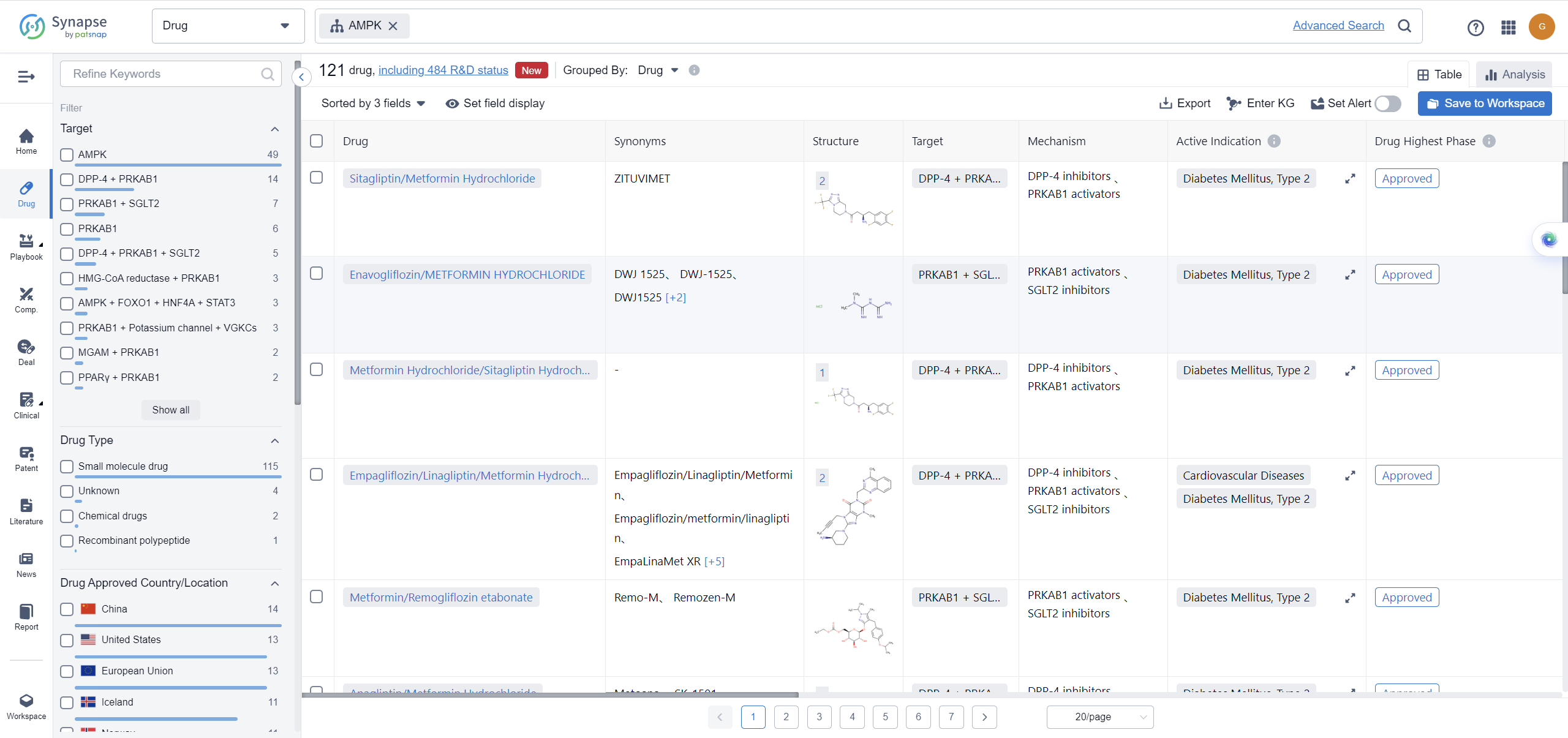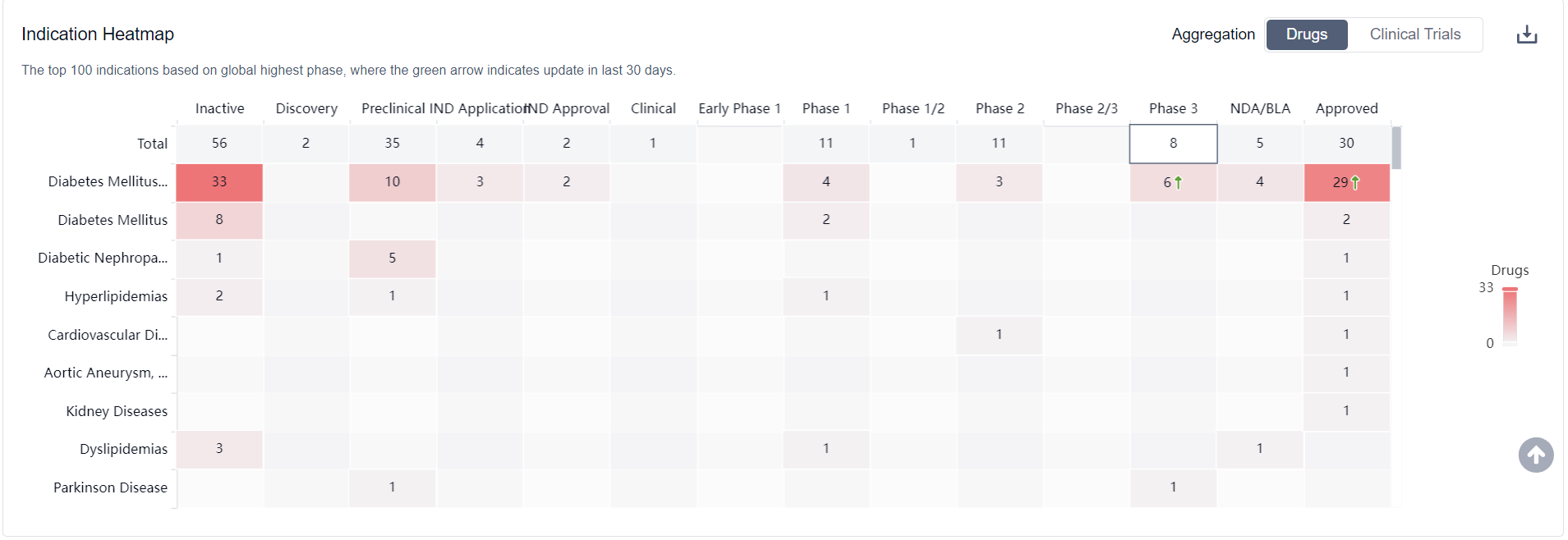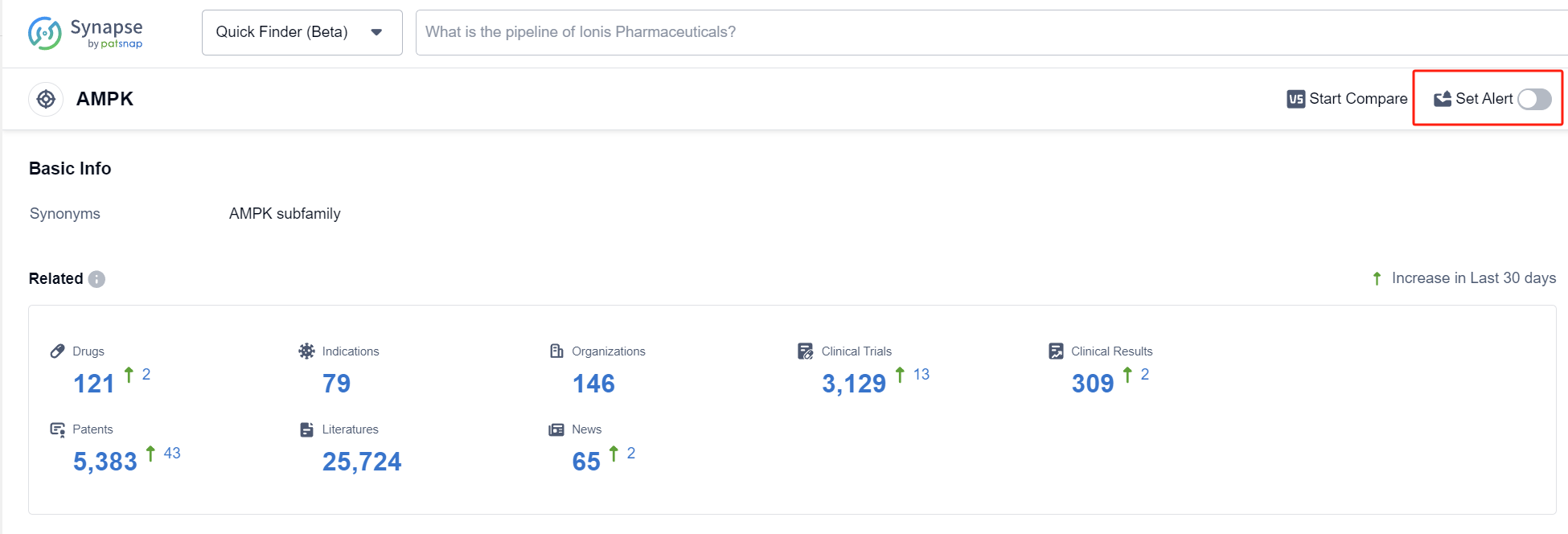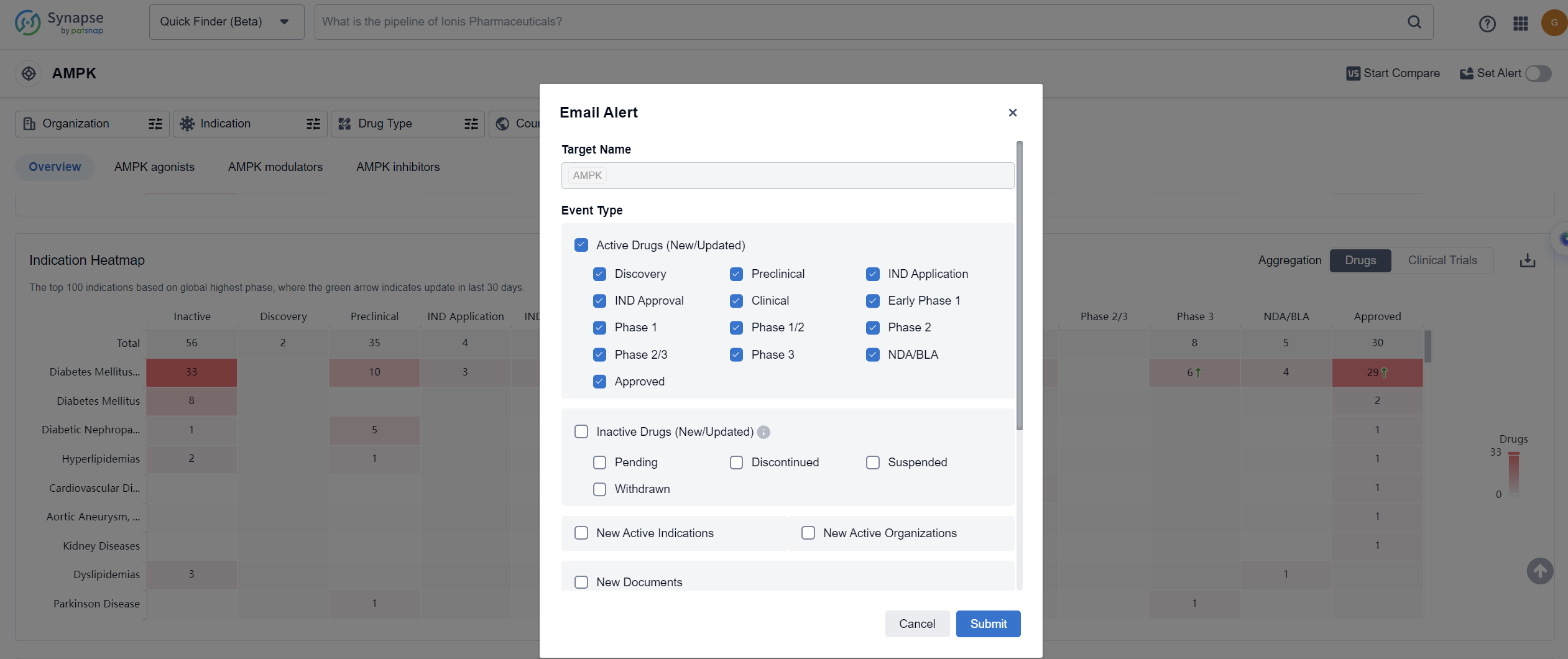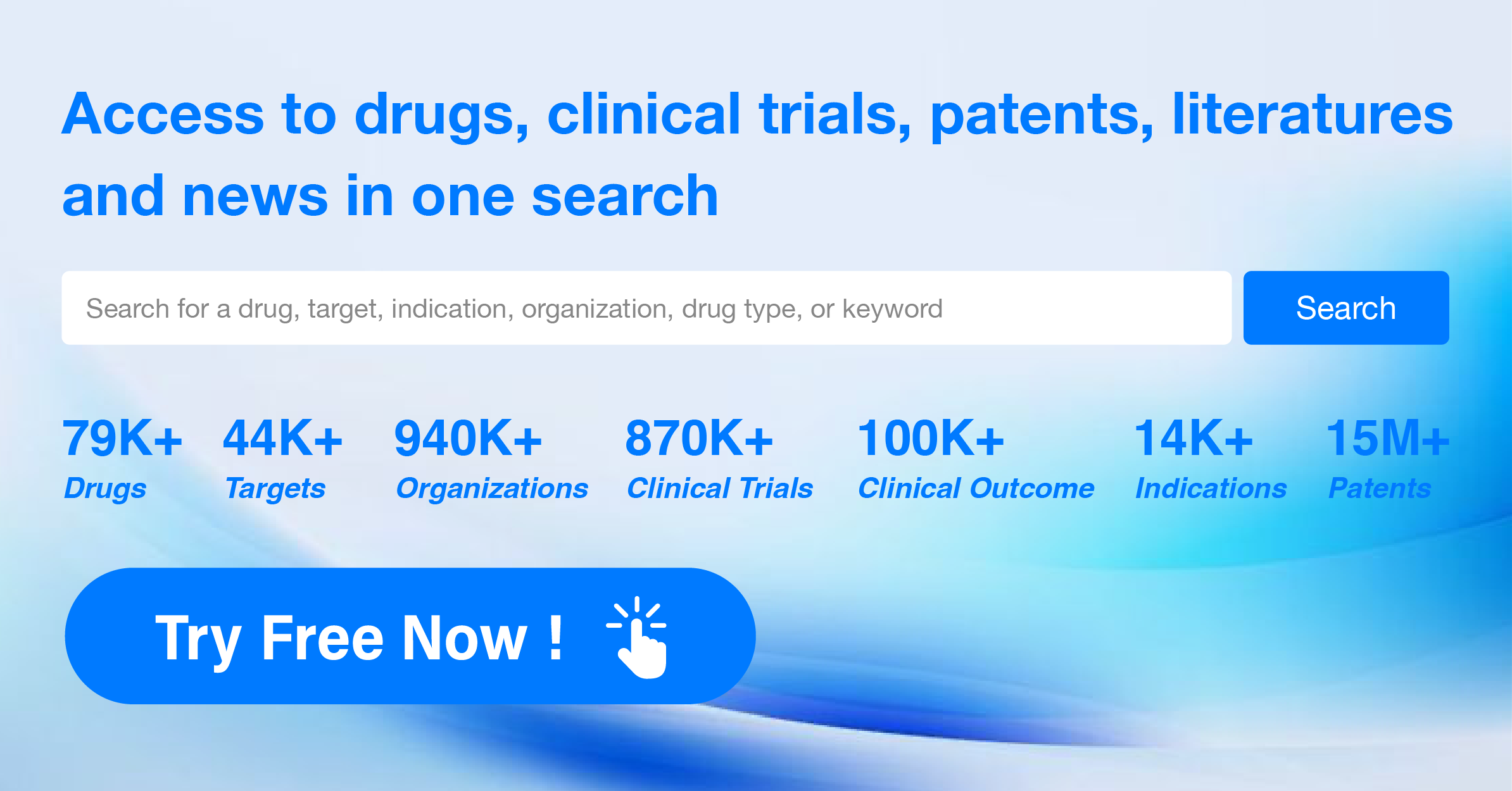What are AMPK inhibitors and how do you quickly get the latest development progress?
AMP-activated Protein Kinase (AMPK) is a heterotrimeric protein consisting of alpha (α) subunit (63kD), beta (β) (30kD), and gamma (γ) (37-63kD) subunits. The alpha subunit has a catalytic role, while the beta and gamma subunits serve important roles in maintaining the stability of the trimer and the specificity of the substrates. When AMP binds to the gamma subunit, it induces a conformational change that activates the complex, making it more susceptible to phosphorylation activation by upstream kinases of AMPK. AMPK maintains cellular energy balance by affecting multiple stages of cellular metabolism. When intracellular ATP levels decrease, AMPK inhibits glycogen, fat, and cholesterol synthesis to reduce ATP usage, and promotes fatty acid oxidation and glucose transport to increase ATP production. Hence, AMPK is considered a switch regulating cellular energy metabolism. As a low ATP sensor, AMPK maintains ATP homeostasis and adjusts downstream signaling pathways to maintain optimal mitochondrial status. Mitochondrial damage or lack of AMPK activation, including respiratory chain complex inhibitors such as the diabetes drug metformin, rotenone a Parkinson's-disease causing herbicide, proton clusters, ATP synthase inhibitors and mitochondrial DNA depletion or mutations, AMPK becomes the protector of mitochondria. In yeast 206, Caenorhabditis elegans 207-209, and Drosophila 210, AMPK is linked with mitochondria, representing an evolutionarily conserved function of AMPK.
In eukaryotes, AMPK is activated when mitochondrial function or ATP production is impaired. Interestingly, there is no excess of AMPK substrates to maintain mitochondrial health, as mitochondrial integrity is the central medium of cellular energetics. The preference for specific AMPK complexes to locate at or near mitochondria and respond to mitochondrial-specific stressors is yet to be investigated. In lysosomes, how the mitochondrial pool of AMPK interacts or relates to LKB156 is an interesting area for future research. Further study is required to understand how the interactions among mitochondria, AMPK, ULK1 and other kinases activated by energy stressors like PINK1 and TBK1, and differential protein phosphorylation, influence mitochondrial autophagy and cell division and/or fusion and apoptosis177,211-213. Interestingly, recent research has found that the pluripotency of immune cells and stem cells involve mitochondrial dynamics and health214-218.
Finally, expanding the substrate pool of mitochondrial AMPK will aid in researching novel mechanisms through which AMPK regulates mitochondrial function. Given that metformin is an effective AMPK activator, these issues not only bear importance for understanding basic biology but also provide implications for over 150 million individuals worldwide who take metformin. Furthermore, research on the direct activators of AMPK for the treatment of cancer and metabolic diseases (Box 1) has underscored the importance of AMPK in biology, particularly mitochondrial biology, in relation to metabolism. The regulation of mitochondrial health by metformin and other AMPK activators is one mechanism through which type 2 diabetes can be ameliorated, and is also one of the reasons why exercise and caloric restriction can improve health and extend the lifespan.
How do they work?
From a biomedical perspective, AMPK inhibitors refer to a class of drugs or compounds that inhibit the activity of adenosine monophosphate-activated protein kinase (AMPK). AMPK is an enzyme that plays a crucial role in regulating cellular energy homeostasis. It is activated when cellular energy levels are low, and it helps restore energy balance by promoting processes such as glucose uptake and fatty acid oxidation, while inhibiting energy-consuming pathways like protein synthesis.
AMPK inhibitors, on the other hand, work by blocking the activation or function of AMPK. By doing so, they can modulate various cellular processes and signaling pathways. These inhibitors have been studied for their potential therapeutic applications in various diseases, including cancer, metabolic disorders, and neurodegenerative diseases.
In cancer research, AMPK inhibitors have been investigated as potential anti-cancer agents. By inhibiting AMPK, these drugs aim to disrupt cancer cell metabolism, which is often dysregulated and dependent on altered energy pathways. Additionally, AMPK inhibitors may also enhance the efficacy of other anti-cancer treatments, such as chemotherapy or radiation therapy.
In the context of metabolic disorders like type 2 diabetes and obesity, AMPK inhibitors have been explored as a potential strategy to modulate glucose and lipid metabolism. By inhibiting AMPK, these compounds may alter the balance between energy storage and utilization, potentially leading to improved glucose control and weight management.
It's important to note that the development and use of AMPK inhibitors require careful consideration of their potential side effects and impact on normal cellular functions. While these inhibitors hold promise as therapeutic agents, further research is needed to fully understand their mechanisms of action and evaluate their safety and efficacy in clinical settings.
List of AMPK Inhibitors
The currently marketed AMPK inhibitors include:
- Sitagliptin/Metformin Hydrochloride
- Enavogliflozin/METFORMIN HYDROCHLORIDE
- Metformin Hydrochloride/Sitagliptin Hydrochloride
- Empagliflozin/Linagliptin/Metformin Hydrochloride
- Metformin/Remogliflozin etabonate
- Anagliptin/Metformin Hydrochloride
- Atorvastatin Calcium Hydrate/Metformin Hydrochloride
- Ertugliflozin/Metformin Hydrochloride
- Evogliptin Tartrate/Metformin Hydrochloride
- Empagliflozin/metformin Hydrochloride
For more information, please click on the image below.
What are AMPK inhibitors used for?
AMPK inhibitors has long been in the spotlight as a potential target for the treatment of diseases associated with metabolic disorders, including diabetes, obesity and fatty liver, as well as cancer. For more information, please click on the image below to log in and search.
How to obtain the latest development progress of AMPK inhibitors?
In the Synapse database, you can keep abreast of the latest research and development advances of AMPK inhibitors anywhere and anytime, daily or weekly, through the "Set Alert" function. Click on the image below to embark on a brand new journey of drug discovery!
